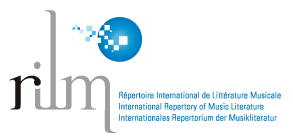Discos de tango en la era digital: entre la innovación y el conservadurismo
Palabras clave:
Tango contemporáneo, Disco, Tecnologías digitales, Grabación, Post-producciónResumen
El tango tuvo un rol fundamental en la masificación de la industria discográfica argentina en la primera mitad del siglo XX. Los años 2000 fueron testigos de una reemergencia creativa del género y de nuevas condiciones de producción. Desde entonces, las posibilidades sonoras son más amplias, las obras se desmaterializaron progresivamente, proliferaron los home studios y se acentuaron las lógicas DIY (do it yourself) de trabajo.
Basado en una etnografía multisituada (2016-2021), en este artículo propongo analizar la representación actual del disco de tango, así como las decisiones artísticas que tienen lugar antes, durante y después de la grabación. Esta exploración me permitirá responder tres preguntas: ¿qué esconde el uso de las herramientas digitales?, ¿generan aportes musicales significativos? y ¿qué relación hay entre las prácticas digitales y la inestabilidad/flexibilidad laboral?
Descargas
Publicado
Número
Sección
Licencia
Derechos de autor 2021 Jimena Ponce de León

Esta obra está bajo una licencia internacional Creative Commons Atribución-NoComercial 4.0.
Atribución/Reconocimiento-NoComercial 4.0 Internacional
https://creativecommons.org/licenses/by-nc/4.0/
Usted es libre de:
- Compartir — copiar y redistribuir el material en cualquier medio o formato.
- Adaptar — remezclar, transformar y construir a partir del material.
- La licenciante no puede revocar estas libertades en tanto usted siga los términos de la licencia
Bajo los siguientes términos:
- Atribución — Usted debe dar crédito de manera adecuada, brindar un enlace a la licencia, e indicar si se han realizado cambios. Puede hacerlo en cualquier forma razonable, pero no de forma tal que sugiera que usted o su uso tienen el apoyo de la licenciante.
- No Comercial — Usted no puede hacer uso del material con propósitos comerciales.
- No hay restricciones adicionales — No puede aplicar términos legales ni medidas tecnológicas que restrinjan legalmente a otras a hacer cualquier uso permitido por la licencia.
Avisos:
No tiene que cumplir con la licencia para elementos del material en el dominio público o cuando su uso esté permitido por una excepción o limitación aplicable.
No se dan garantías. La licencia podría no darle todos los permisos que necesita para el uso que tenga previsto. Por ejemplo, otros derechos como publicidad, privacidad, o derechos morales pueden limitar la forma en que utilice el material.






